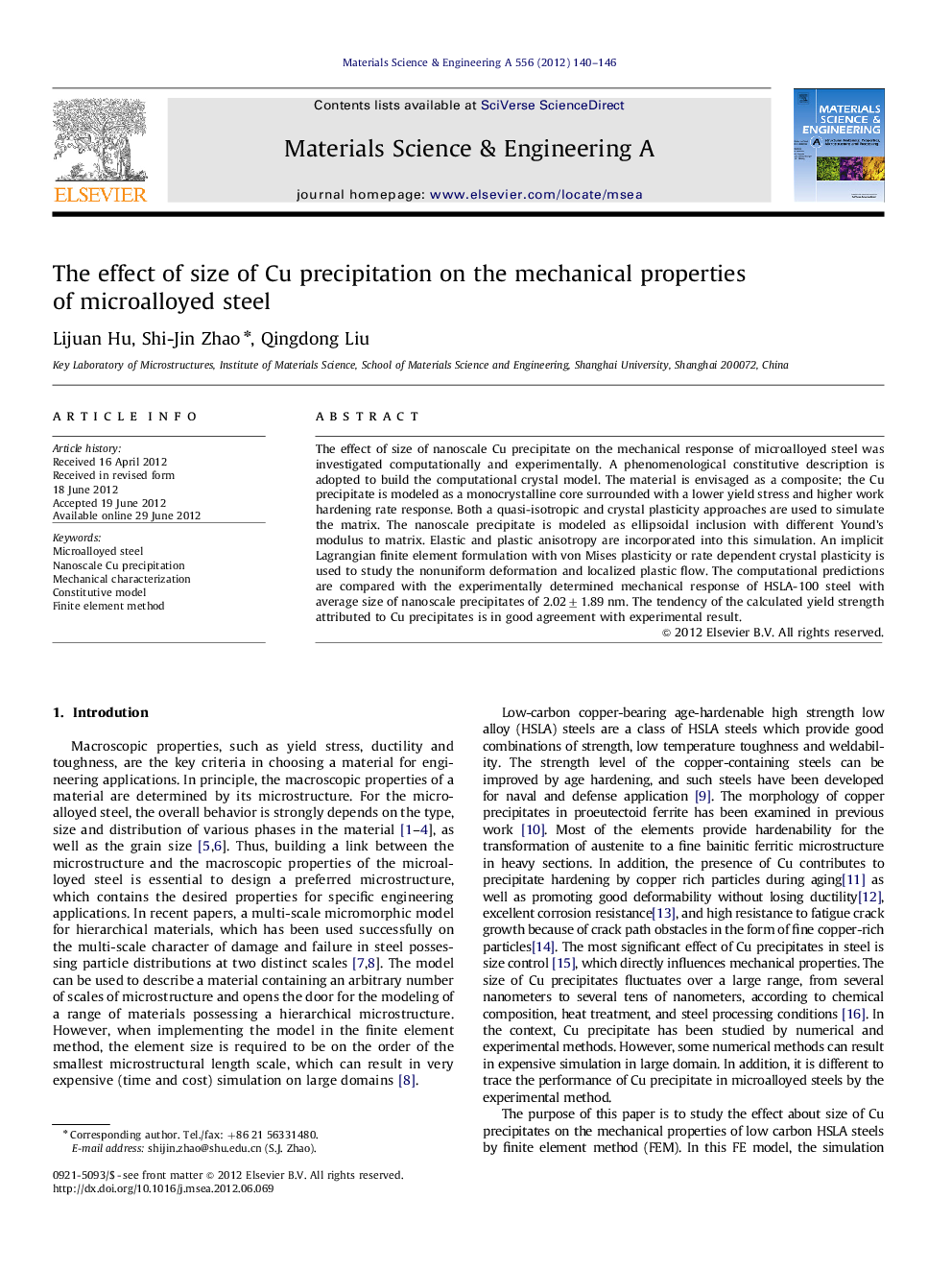| Article ID | Journal | Published Year | Pages | File Type |
|---|---|---|---|---|
| 1577039 | Materials Science and Engineering: A | 2012 | 7 Pages |
Abstract
The effect of size of nanoscale Cu precipitate on the mechanical response of microalloyed steel was investigated computationally and experimentally. A phenomenological constitutive description is adopted to build the computational crystal model. The material is envisaged as a composite; the Cu precipitate is modeled as a monocrystalline core surrounded with a lower yield stress and higher work hardening rate response. Both a quasi-isotropic and crystal plasticity approaches are used to simulate the matrix. The nanoscale precipitate is modeled as ellipsoidal inclusion with different Yound's modulus to matrix. Elastic and plastic anisotropy are incorporated into this simulation. An implicit Lagrangian finite element formulation with von Mises plasticity or rate dependent crystal plasticity is used to study the nonuniform deformation and localized plastic flow. The computational predictions are compared with the experimentally determined mechanical response of HSLA-100 steel with average size of nanoscale precipitates of 2.02±1.89 nm. The tendency of the calculated yield strength attributed to Cu precipitates is in good agreement with experimental result.
Related Topics
Physical Sciences and Engineering
Materials Science
Materials Science (General)
Authors
Lijuan Hu, Shi-Jin Zhao, Qingdong Liu,
